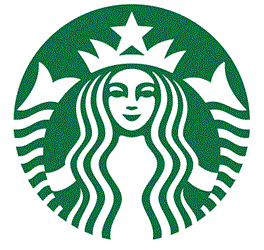Restaurant And Hospitality News – March 28, 2016

By Christine Kern, contributing writer

In news this week, Starbucks is launching a Visa Prepaid Card tied to its loyalty program; Turnover rose yet again in hospitality; and QSRs are being challenged by the sale of prepared foods in grocery outlets.
Starbucks Launching Branded Visa Tied To Loyalty Program
Coffee retail giant Starbucks Corp. has announced that it plans to launch a prepaid Visa debit rewards card issued by Chase that would allow users to earn loyalty points for purchases using the card. The new program is part of Starbuck’s emphasis on loyalty as the core of its digital ecosystem. Rollout is expected by the end of 2016.
Starbucks unveiled the plans for the new card during its annual shareholder meeting, according to The Nation’s Restaurant News. Starbucks now has more than 12.1 million active Rewards customers. The proposed Visa card program is designed, in part, to mollify customers who were upset by recent changes to the Rewards program.
Previously, Starbucks paired with Spotify, the New York Times, and Lyft in programs that let customers earn Starbucks stars towards free items. The new card is a prepaid, reloadable card issued by JPMorgan Chase, and is good anywhere Visa cards are accepted. Customers will be able to apply for the Starbucks Rewards Prepaid Card through the Starbucks Mobile App or Starbucks.com. A Starbucks statement asserts, “This new model is just the beginning of Starbucks opening up its digital ecosystem as well as extending its payment platform.”
Technology is playing a bigger role, with millions of customers using the Starbucks Mobile App on a regular basis. Starbucks continues to innovate and intends to “stay a step or two ahead of the competitors," said Kevin Johnson, who then introduced the first chief technology officer in Starbucks history, Gerri Martin-Flickinger who joined Starbucks in October of 2015.
Hospitality Turnover Rose For Fifth Consecutive Year In 2015
According to the NRA’s Chief Economist Bruce Grindy, although turnover rates remained below pre-recession levels, they rose for the fifth consecutive year, raising concern about talent acquisition and retention for the hospitality industry. Data from the Bureau of Labor Statistics’ Job Openings and Labor Turnover (JOLTS) program reported that the turnover rate topped 70 percent for hospitality for the first time since before the Great Recession.
Hospitality faced an overall turnover rate of 72.1 percent in 2015, an increase of 5.4 percent from 2014 levels, compared to the average turnover rate for all private sector workers, which was 45.9 in 2015. Despite these documented gains, the turnover rate still remains lower than the 2007 rate of 80.7 percent, prior to the economic downturn.
According to the JOLTS report, the quits rate in the restaurants-and-accommodations sector was 50.3 percent in 2015, while the layoffs-and-discharges rate was 19.5 percent. Other separations, which include retirements, transfers, deaths, and separations due to disability, comprised 2.3 percent of the sector’s turnover rate in 2015. Grindy said rising quit rates indicate “workers are increasingly confident in the labor market and are willing to move to another job.”
Quick Service Customers Jumping Ship To Grocery Stores For Prepared Items
According to data from market research firm The NPD Group, visits to grocery stores for either take-out prepared meals or even in-store dining have increased 30 percent since 2008.” This trend is snatching customers away from the Quick Service Restaurant market share. “We have so many options. It’s just one more thing cutting into consumers’ restaurant visits,” explained Bonnie Riggs, analyst with The NPD Group. “It’s a battle for market share, and it looks like some of the non-food concepts are winning.”
The NPD research found that more than 40 percent of the population purchased prepared foods from a grocery store over the 10 months prior to December 2015, compared to 77 percent from a quick-service restaurant. And Consumer Reports estimated that grocery store prepared meals constitute nearly $29 billion in revenue a year.
The research is significant for the quick service segment because it demonstrated that grocery outlets are targeting their best customers; NPD’s QSR Plus Retail Market Monitor data showed that customers who buy grocery prepared foods are “above average quick-service restaurant users.” And dinner poses the greatest threat to poached customers by grocery outlets. “I don’t think QSR operators realize the magnitude of their vulnerability, especially at dinner, the daypart they have the greatest challenges,” Riggs said. The determining factors for most customers in selecting the source of their prepared meals are quality, variety, freshness, and healthy options. QSRs need to be cognizant of raising the bar in these areas. “Those attributes that are really important are the ones that these grocery concepts are delivering best. The more positioning these grocery concepts do, the more they’re going to grow,” Riggs explained.
